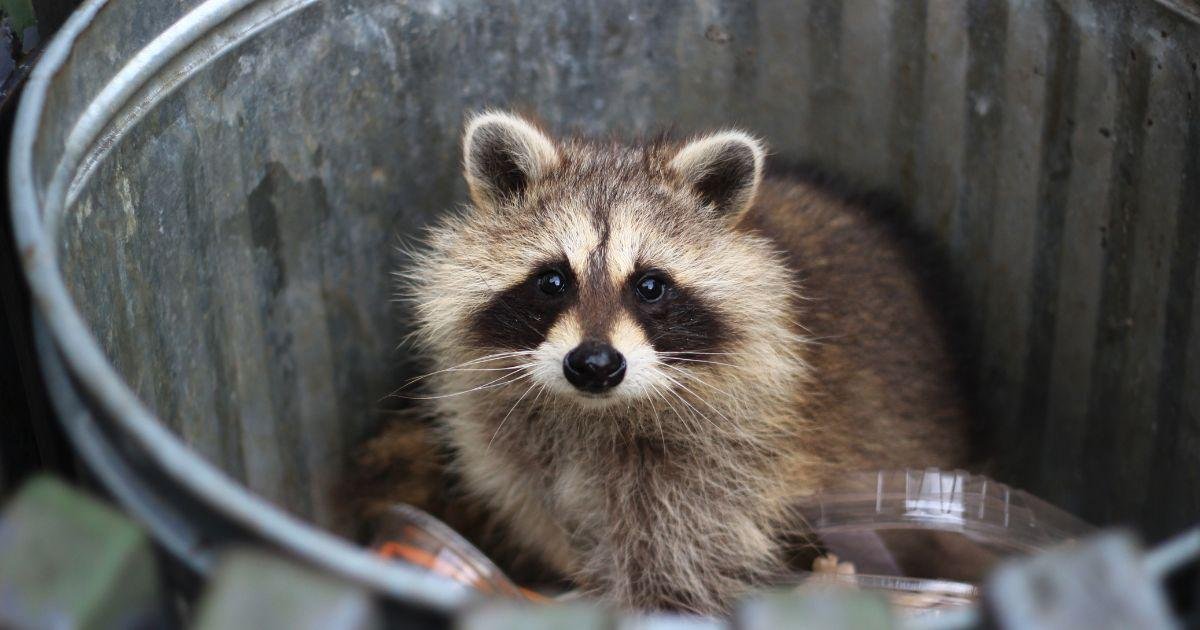As you stroll through your neighborhood, you may notice signs indicating the presence of raccoons. Familiarizing yourself with these signs can help you determine if raccoons are visiting your area, and being aware can prevent potential problems. Raccoons are nocturnal creatures, often foraging through trash or rummaging in gardens, which makes their activities particularly noticeable at night.
Look for telltale signs such as overturned trash cans, scattered food remnants, or distinctive tracks. You might also observe raccoon feces, which can indicate they are nearby. If you hear curious noises at night or see raccoons wandering around, it’s a good sign they might be becoming more comfortable in your neighborhood.
Recognizing these signs early allows you to take preventive measures, ensuring these clever animals don’t become unwelcome guests. Keeping your property clean and secure can help discourage their visits while fostering a harmonious coexistence with wildlife in your area.
Identifying Raccoon Presence
Recognizing the signs of raccoons in your neighborhood is crucial for managing their presence. You can look for distinct visual signs and listen for particular sounds that indicate raccoons are nearby.
Visual Signs of Raccoons
When examining your surroundings for evidence of raccoons near homes, focus on the following visual indicators:
- Tracks: Raccoon footprints are distinctive, featuring five toes with a prominent “thumb” on the front paw. You may spot these tracks in soft soil or near water sources.
- Scat: Raccoon droppings often resemble those of dogs but contain undigested food like fruit seeds or fur. Finding raccoon scat around your property signals their presence.
- Damaged Property: Look for overturned garbage cans, ripped bags, or paw prints on your patio. These signs indicate raccoon activity as they search for food.
- Nesting Areas: Check for signs of nests. Raccoons may use leaves and debris to create dens in attics, basements, or under decks.
Sounds and Noises
Raccoons are primarily nocturnal and may produce various sounds that indicate their presence in your area. Pay attention to these auditory cues:
- Chirps and Whines: Young raccoons often make high-pitched chirping sounds, especially during interactions with their mothers or siblings.
- Growls and Hisses: If raccoons feel threatened, they may hiss or growl. These defensive noises are meant to ward off potential threats.
- Scraping and Clawing: At night, you might hear scraping sounds when raccoons are digging through trash or exploring your yard.
- Rustling: Noises of movement in your garden or trash area can indicate raccoon activity. Listen for slight rustles that suggest something is foraging nearby.
By looking for these signs, you can effectively determine if raccoons are active in your neighborhood.
Raccoon Behavior and Impact
Understanding raccoon behavior and impact can help you manage the challenges they bring to your neighborhood. From their feeding habits to their nesting practices, these traits are significant when assessing their presence in residential areas like McKinney.
Feeding Habits and Food Sources
Raccoons are opportunistic feeders, meaning they consume various foods depending on availability. In your neighborhood, they may scavenge for trash, pet food, and garden fruits. Common food sources include:
- Garbage: Leftover food or unsecured trash cans attract raccoons.
- Pet food: Outdoor feeding can draw them in.
- Gardens: Fruits and vegetables are often targeted.
Their adaptability to urban environments often leads to a raccoon infestation in residential areas. You may notice overturned trash cans or missing garden produce as signs of their activity.
Raccoon Nesting and Sheltering Habits
Raccoons seek safe and sheltered spaces to nest. They often use attics, basements, or sheds in residential areas. The following locations are common nesting sites:
- Tree cavities: Natural options for shelter.
- Vents: Access points for easy entry into homes.
- Under decks or porches: Ideal for creating hidden dens.
If left unchecked, these nesting behaviors can lead to problems in your neighborhood. Securing potential shelter areas can reduce the chances of raccoons taking over your space.
Mitigation and Prevention
Addressing raccoon infestations in residential areas requires proactive measures. Securing food sources and modifying the environment can significantly reduce the likelihood of attracting these animals.
Securing Trash and Compost
Raccoons are notorious for rummaging through trash cans and compost bins. The first step in preventing access is to use heavy-duty, raccoon-proof trash containers with locking lids. Ensure your bins are placed in a secure area, preferably inside a garage or shed.
When it comes to composting, consider using enclosed composters. These can deter raccoons from accessing food scraps. If using open compost, avoid adding meat, dairy, or oily foods, as these attract wildlife. Regularly clean up around your outdoor eating areas. This minimizes food remnants that draw raccoons close to your home.
Habitat Modification
Modifying your yard can make it less inviting for raccoons. Keep your garden clean and free of fallen fruits and vegetables. Consider fencing in gardens, but ensure the fence extends underground, as raccoons are excellent diggers.
Remove potential nesting sites like piles of debris, old sheds, or wood stacks. Utilize motion-sensor lights around your property; sudden movements and light may deter nocturnal raccoons. Trimming overhanging tree branches also limits access to your roof and attic areas, where raccoons might seek shelter.
If you’re experiencing raccoon issues, contact Critter Stop at (214) 234-2616 for a free inspection. Critter Stop has a fantastic reputation and online customer reviews because it provides high-quality work and great customer service.
—











